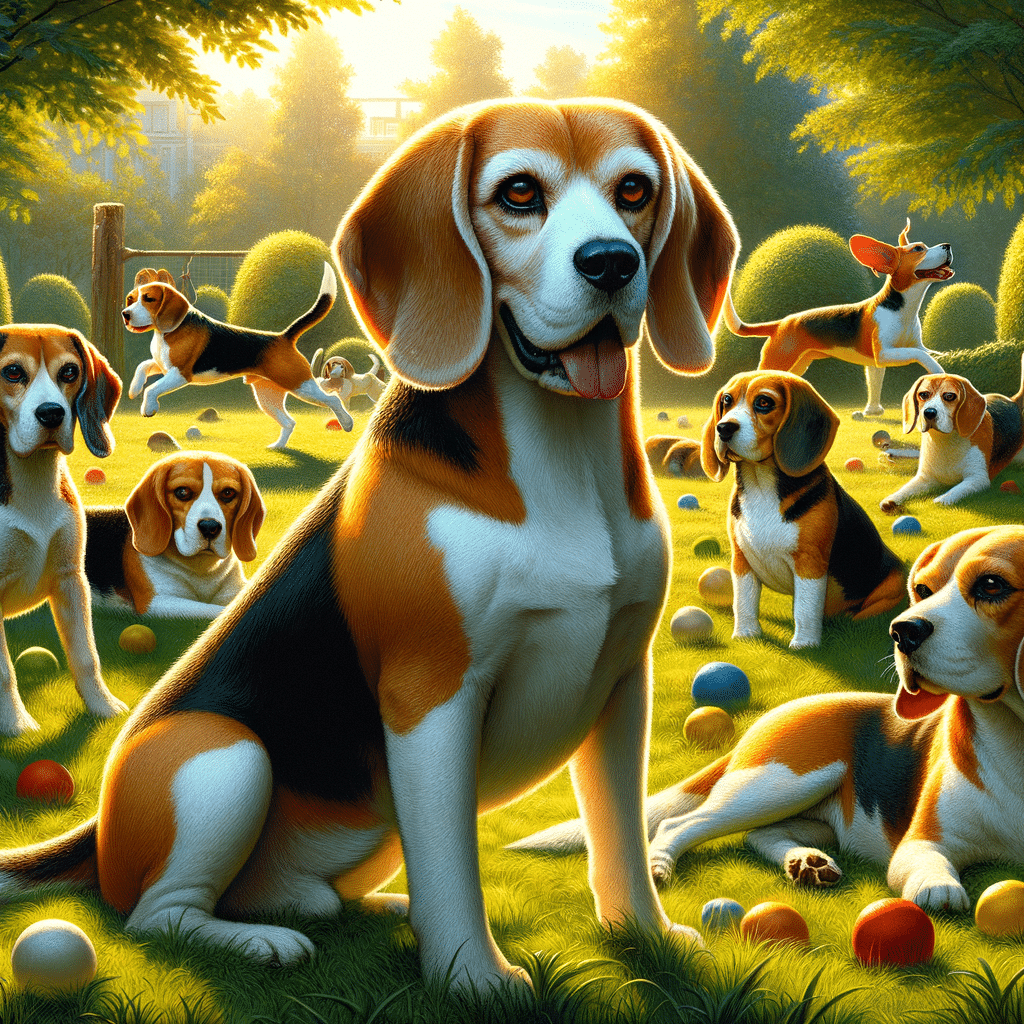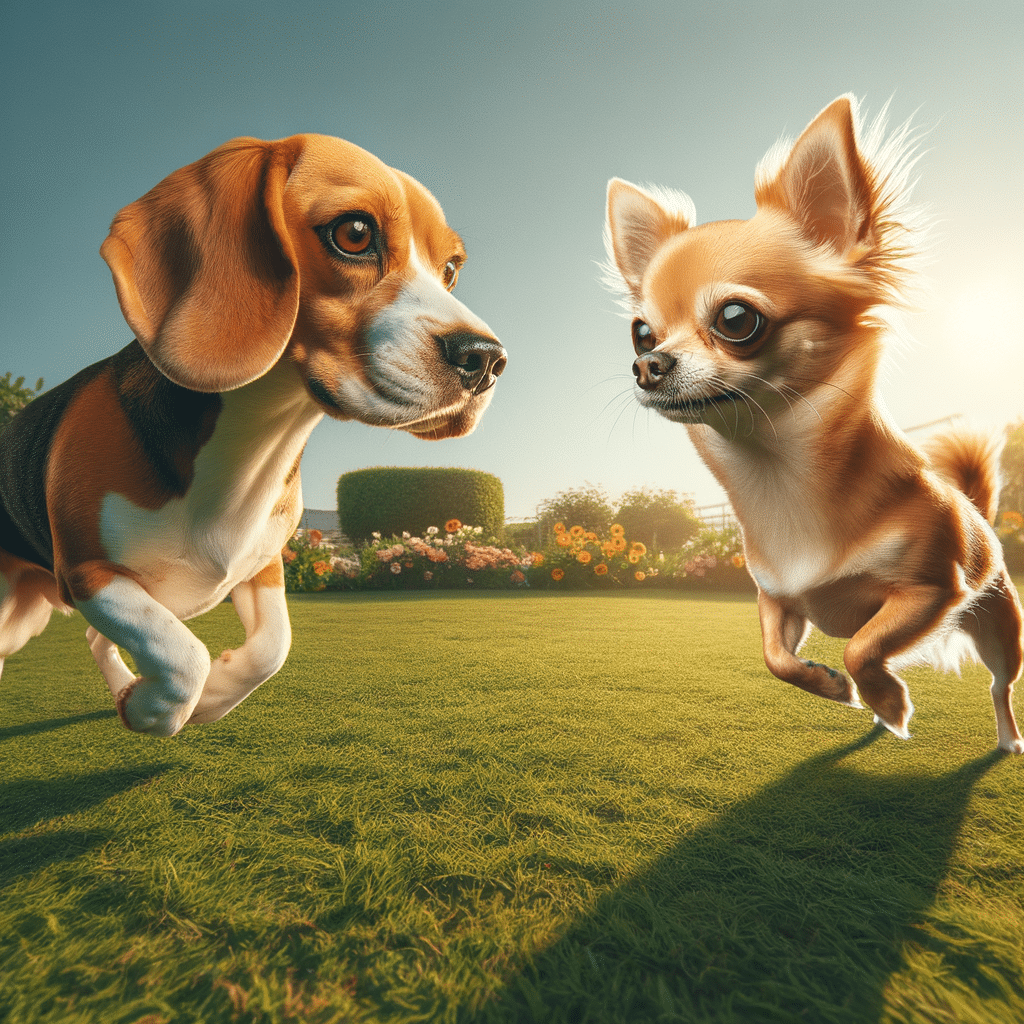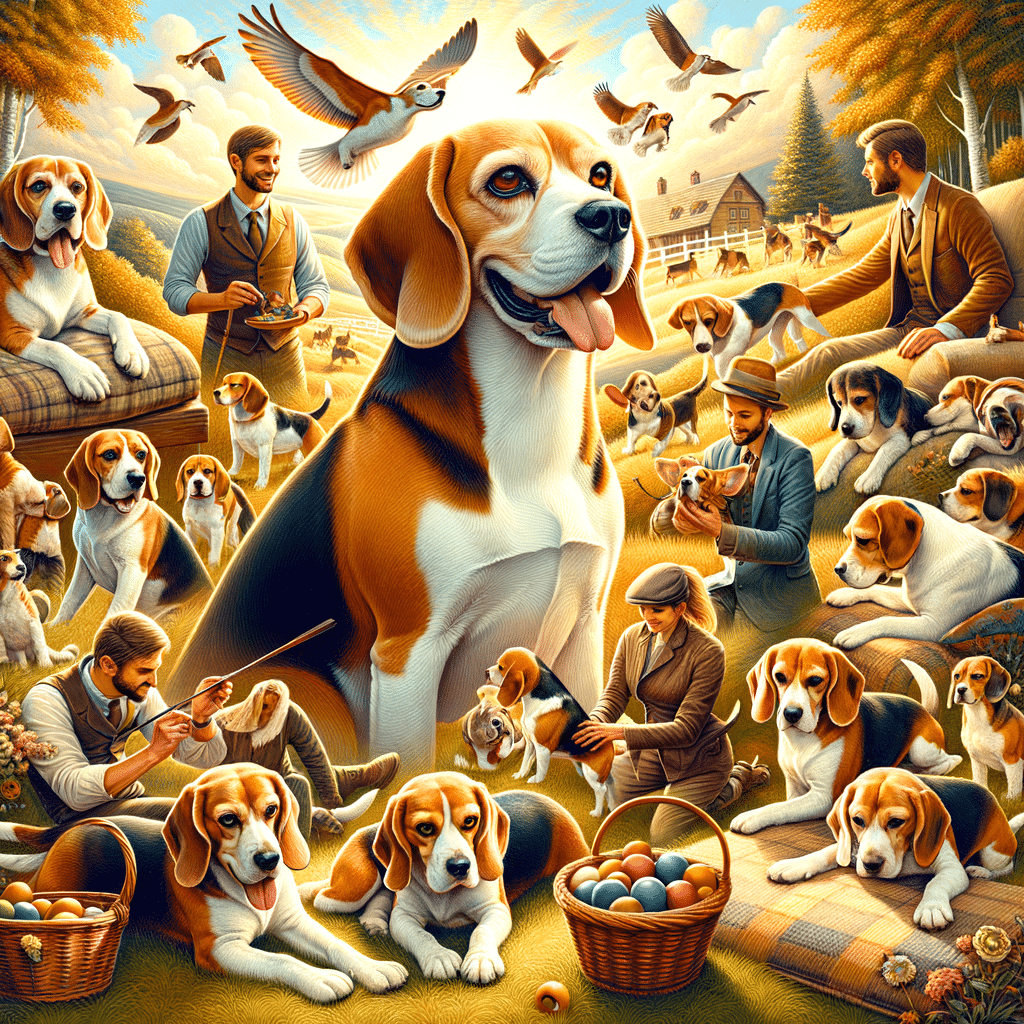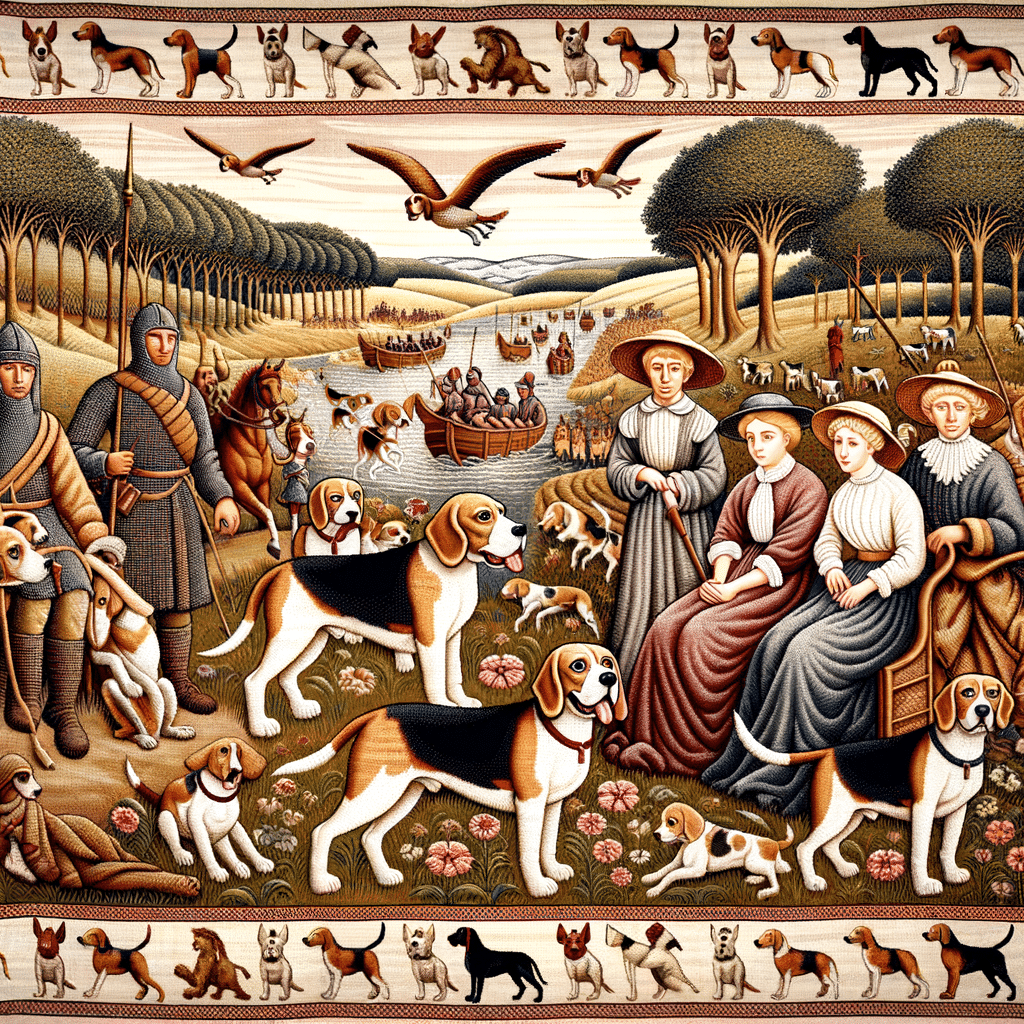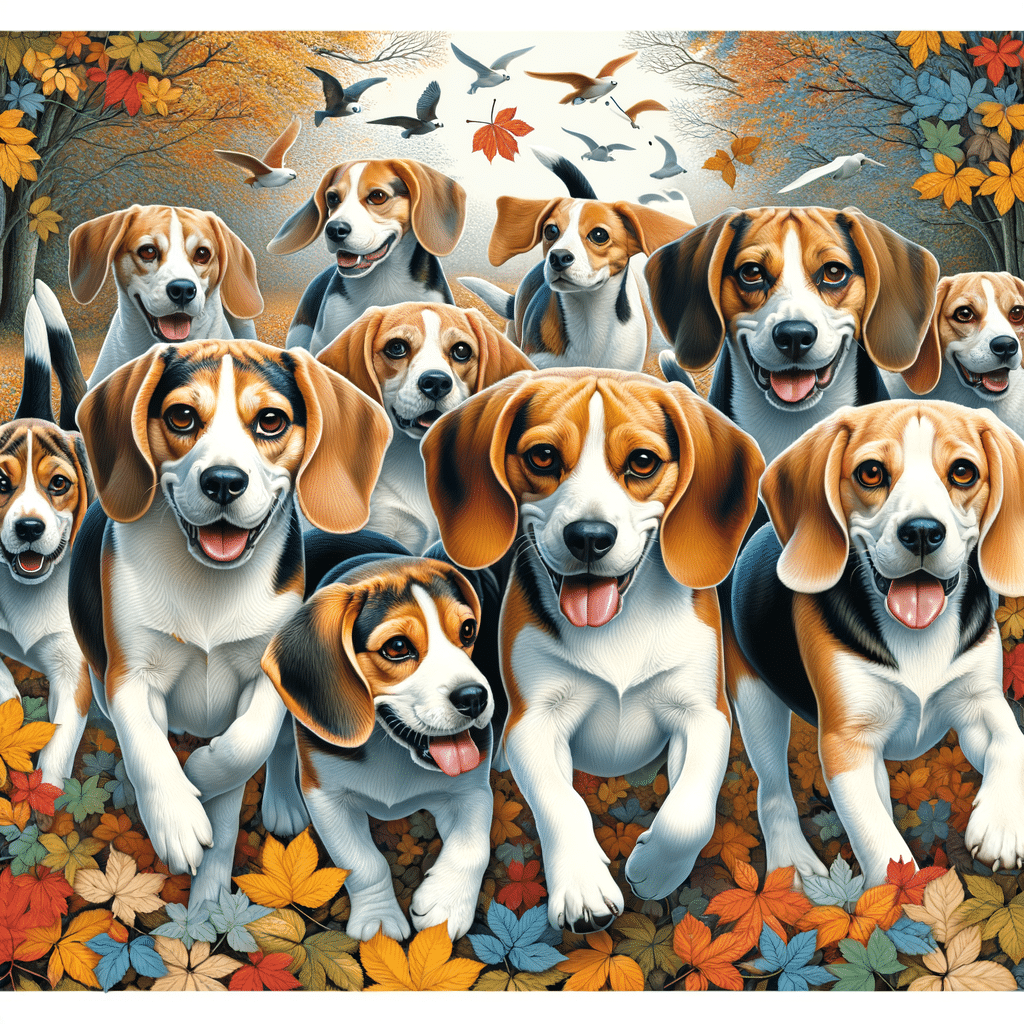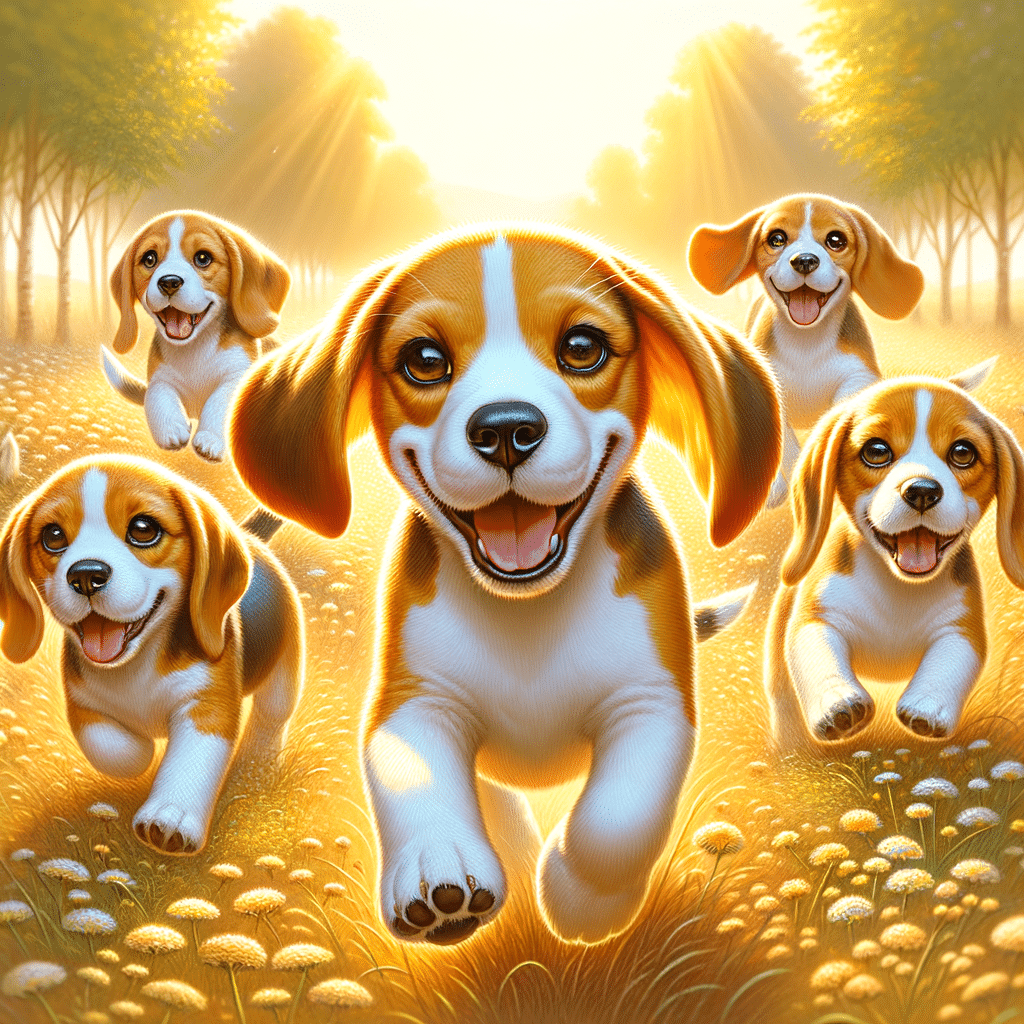Beagles are a popular dog breed among pet lovers due to their size, temperament, and distinctive appearance, which makes them a highly suitable choice for a family companion. They are small to medium-sized dogs that fall into two primary size categories. Some beagles stand under 13 inches at the shoulder, known as the “pocket beagle,” while others stand between 13 and 15 inches.
In This Article
Their size contributes to their appeal as manageable pets that can adapt to various living conditions, from apartments to homes with large yards. The beagle’s stature and robust build also reflect its origins as a scent hound, capable of endurance and active pursuit similar to large dog breeds.
These traits require consideration in daily care and training. As with any breed, understanding a beagle’s potential size and growth pattern is crucial for prospective owners to ensure they can meet the puppy’s physical and psychological needs throughout life.
Highlights
- Beagles are a well-loved small to medium-sized breed ideal for families.
- They typically fall into two size categories, both under 15 inches tall.
- Care and training are essential considerations due to their active nature.
Breed Overview
The beagle is a small- to medium-sized hound with a distinct place in the dog breed hierarchy. It is renowned for its keen sense of smell and amiable temperament.
History and Origin
The beagle breed originated in England and was used as a scent hound for hunting. In historical terms, these dogs can be traced back to Roman times but gained popularity during the 11th century with the advent of fox hunting. Beagles are believed to be descendants of ancient hounds brought to England by the Romans and later refined by the British into the breed recognized today.
Breed Standard
The American Kennel Club (AKC) and the UK Kennel Club recognize beagles as part of the scent hound group, and they are categorized into two types based on size:
- Those standing under 13 inches at the shoulder
- Those standing between 13 and 15 inches
According to breed standards, beagles should show good body proportions, a sturdy build, and a pleasing countenance with no signs of aggression or timidity. Recognized coat colors include tricolor and ticked or mottled varieties.
Physical Characteristics
A grown beagle has a robust, compact body and a smooth, dense coat that requires minimal grooming. Its appealing expression is accentuated by large eyes and floppy ears.
Here’s a summary of their physical characteristics:
- Height: Typically ranges from 13 to 15 inches at the shoulder
- Weight: Falls between 20 to 30 pounds
- Coat: Short, hard coat suitable for the outdoors
- Color: Often tricolor with a white base, but other variations exist.
Noted for being friendly, curious, and companionable. They are often described as having a keen sense of smell and high energy level, which makes them formidable hunters.
Beagles are considered excellent family pets due to their moderate size and adaptable temperament. They are active dogs, and due to their history as hunting hounds, they possess a notable amount of energy and stamina.
Size and Growth
In understanding the size and growth of beagle dogs, it is important to consider the distinct stages from puppies to adults and the essential aspect of weight management to maintain optimal health.
Puppies to Adults
Beagle puppies reach their full adult size around 18 months. During this growth phase, the male beagle grows to 13-16 inches, and the female beagle to 13-15 inches. It’s common for your beagle puppy to have growth spurts and plateaus. Pet parents can refer to a beagle growth chart to track their beagle’s development and ensure it aligns with general expectations for the breed.
Weight Management
A beagle’s weight is closely tied to its height. Male beagles usually weigh between 18 and 24 pounds, whereas females generally weigh 19-22 pounds. Maintaining a healthy weight with puppy food is crucial to prevent obesity and related beagle health concerns such as diabetes. Smaller beagles will weigh less, and larger beagles will weigh more; therefore, owners should monitor their beagle’s diet, dog training, and exercise routine to promote a healthy lifestyle.
Beagle owners should conduct regular weigh-ins with a puppy weight calculator and consult their veterinarian to ensure their dog remains within a healthy weight range throughout life.
Care and Requirements
Beagle dogs are active and require regular care to maintain their health and happiness. Understanding their exercise needs, dietary habits, and grooming schedule is essential for their well-being.
Exercise and Activity
Beagles need regular daily exercise to stay healthy and prevent boredom, which can often lead to destructive behavior. Owners should provide at least an hour of physical activity daily, divided into several walks and playtime sessions. Beagles enjoy companionship during exercise and thrive in interactive activities that engage their body and mind.
Nutrition and Diet
A beagle’s nutrition should consist of high-quality dog food tailored to their age, size, and exercise level. Due to their tendency toward obesity, monitoring their diet and providing portion control is vital. Discussions with a veterinarian can help determine the appropriate nutrition plan, considering any breed-specific health problems beagles might have, like hip dysplasia or hypothyroidism.
Grooming and Shedding
Beagles have short coats but are known for their year-round shedding. Regular grooming, including weekly brushing, can help manage shedding and maintain a healthy coat. They do not require frequent baths, but keeping their ears clean and dry is essential to prevent infections, a common issue in beagles. Dental hygiene should also be part of a beagle’s grooming routine to ensure long-term oral health.
Behavior and Training
Understanding their temperament and personality helps determine appropriate training and socialization strategies. Beagles are intelligent dogs with a scent-hound heritage, significantly influencing their behavior.
Temperament and Personality
Beagles are known for their happy-go-lucky attitude, often described as funny and affectionate. This breed exhibits a friendly disposition, which makes them loyal companions. They are typically energetic and curious, traits valuable in their origin as hunting dogs. Beagle intelligence is seen in their problem-solving skills, which can sometimes translate into mischievous behavior if they are not adequately engaged and stimulated.
Training Challenges
Training a beagle can be a unique challenge due to its intelligence and independence. As a hunting dog historically bred to hunt in packs and bay, they have an instinct to follow their noses, which can sometimes lead to distractibility. Here are some specific challenges to expect:
- Persistence: Beagles may exhibit stubbornness, requiring consistent and patient training methods.
- Tendency to bark and bay: Owners might need to work specifically on quiet commands to manage their beagle’s vocalizations.
- Distraction by scents: Their strong sense of smell can lead them off track during obedience training.
Training sessions should be short, engaging, and positive. They should acknowledge their hard-to-train nature and capacity to learn efficiently with the right approach.
Socialization
Early socialization is crucial for beagles to develop into well-adjusted adult dogs. Exposure to various people, environments, sounds, and animals helps them become more adaptable and less fearful in unfamiliar situations. It’s important to remember that beagles are sociable animals that enjoy the company of humans and other dogs. Socialization helps to channel their energetic and curious nature into positive behaviors.
- Interaction with other dogs: Allows beagles to engage socially and physically, reducing chances of problematic behaviors.
- Exposure to different scenarios: Helps beagles adapt and respond calmly to new experiences.
- Positive reinforcement: Utilizing treats and praise during socialization builds positive associations with new stimuli.
Frequently Asked Questions
Understanding the different sizes of beagles is essential for potential owners regarding housing, exercise, and health care considerations.
What are the common measurements for male and female beagle weights?
Male beagles typically weigh 18-24 pounds, while females usually range from 19-22 pounds. This can vary depending on several factors, including diet and genetics.
What is the typical height range for adult beagles?
Adult beagles generally stand about 13-16 inches tall for males and 13-15 inches for females at the withers, the ridge between their shoulder blades.
How do the sizes of different beagle types vary?
Two primary beagle varieties are recognized based on size: those standing under 13 inches at the shoulder and those between 13 and 15 inches. Size can also vary due to the specific breeding practices.
At what age is a beagle considered fully grown?
Beagles are typically considered fully grown by the time they reach 18 months of age, at which point their skeletal system has matured, although they may continue to fill out in muscle afterward.
How does one interpret a beagle size chart?
A beagle size chart provides a range of typical weights and heights based on age milestones. It helps owners track their pet’s development compared to average growth patterns.
What is the expected lifespan of a beagle to its size?
The average lifespan of a beagle is around 10-15 years, and while size can be a factor in an individual dog’s health, proper care and regular veterinary checkups play a crucial role in their overall lifespan.
